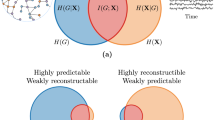Abstract
IN the course of a study of the structure of simple polyatomic molecules, the Raman spectrum of hydrazine, N2H4, was obtained with the view of finding the Raman line or lines which correspond to the symmetrical vibration N-N in polyatomic molecules. We should expect to find a line in the neighbourhood of 1600 cm.−1, but the hydrazine spectrum showed three lines of roughly equal intensity at 3196 cm.−1, 3270 cm.−1, and 3344 cm.−1, along with a very doubtful line at 1720 cm.−1. These three lines are obviously due to N-H vibrations, and it seems curious that the symmetrical vibration should be so weak (if present at all) in the spectrum of this molecule.
This is a preview of subscription content, access via your institution
Access options
Subscribe to this journal
Receive 51 print issues and online access
$199.00 per year
only $3.90 per issue
Buy this article
- Purchase on Springer Link
- Instant access to full article PDF
Prices may be subject to local taxes which are calculated during checkout
Similar content being viewed by others
Author information
Authors and Affiliations
Rights and permissions
About this article
Cite this article
SUTHERLAND, G. Raman Lines of Simple Polyatomic Molecules. Nature 126, 916–917 (1930). https://doi.org/10.1038/126916c0
Issue Date:
DOI: https://doi.org/10.1038/126916c0
Comments
By submitting a comment you agree to abide by our Terms and Community Guidelines. If you find something abusive or that does not comply with our terms or guidelines please flag it as inappropriate.



